A mum was forced to quit her job after a brush with “Britain’s most dangerous plant” left her hand covered in horrible blisters.
Kelly Sherry, 41, developed irritation in her hand and wrist shortly after walking her dog in Paisley, Scotland.
The next day, painful blisters broke out on her skin, forcing the holistic therapist to cancel client appointments.
Now it seems that the dreaded giant hogweed was the culprit and that its dangerous sap reached her without her even touching it.
She said: “There wasn’t any hogweed in bloom so I guess it’s either because I petted another dog or cleaned up my own dog after his walk.”

Kelly Sherry, 41, was forced to quit her job after a brush with “Britain’s most dangerous plant” left her hand covered in horrible blisters.
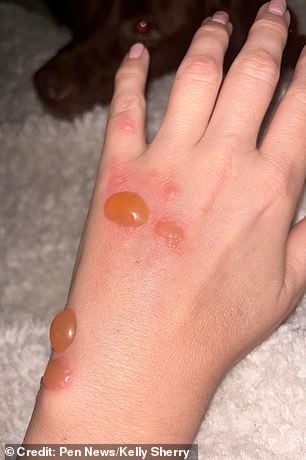

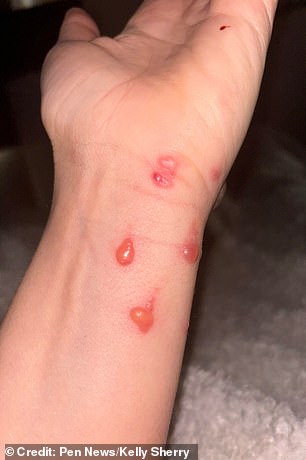

Kelly developed irritation in her hand and wrist shortly after walking her dog in Paisley, Scotland.
‘About 10 minutes after returning from my walk, while driving, I felt the sleeve irritate my wrist and hand, which began to turn red shortly after.
“It was like a burning sensation, like a friction burn.”
She continued: ‘Throughout the day it became more intense.
‘After washing again and applying some Bepanthen to try to relieve the pain, the skin started to look like burn marks, as if it had been doused with hot oil from a frying pan.
‘Some marks were larger than others and showed signs of blistering.
“By morning, all the blisters had gotten worse and it was very painful to even move your hand or have something touch it.”
Kelly’s doctor prescribed a course of antihistamines, along with steroid cream and antibiotics, and told her that hogweed was to blame.
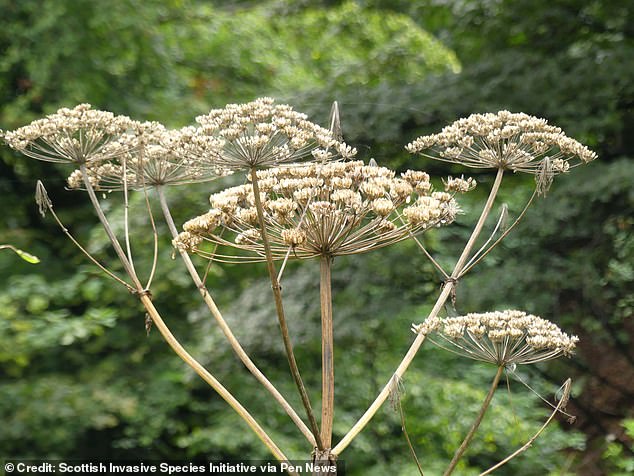

It seems that the dreaded giant hogweed was the culprit, and that its dangerous sap reached her without her even touching it.
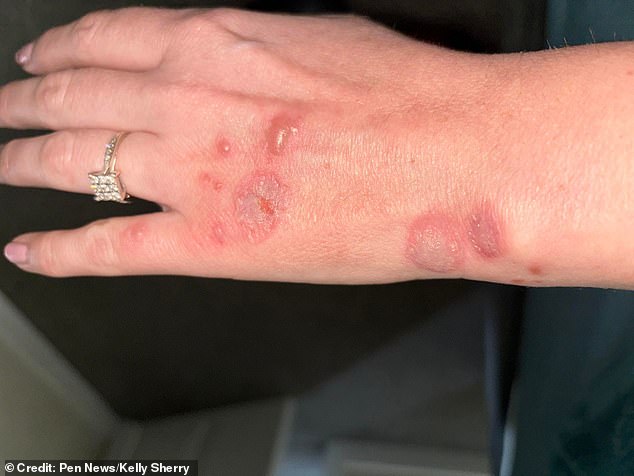

Kelly’s doctor prescribed a course of antihistamines, along with steroid cream and antibiotics, and told her that hogweed was to blame.
In Britain there is the common hogweed, which is a native species, and its invasive cousin, the giant hogweed.
The latter carries a sap that prevents the skin from protecting itself from the sun’s rays, causing horrible burns when exposed to natural light.
To make matters worse, it often causes no immediate pain, meaning its victims can continue burning in daylight without a care in the world.
Callum Sinclair, project manager for the Scottish Invasive Species Initiative, confirmed that giant hogweed was the most likely culprit behind Kelly’s injuries.
And he warned that the harmful effects of the sap can last for years.
He said: ‘Our view is that these are giant hogweed burns based on the blisters shown in the photographs.
‘The giant hogweed plants are still quite small at this time of year, so unless the lady has been in direct contact with them, the contact was most likely from a third party.
“These burns are likely to leave marks that may worsen or cause itching and irritation when exposed to bright or direct sunlight.
“So you may need to keep your skin covered for a while; this response to light can last for several years.”
A week later, Mrs. Sherry’s blisters have burst (what she described as “the worst pain”) and it still hurts.
In addition, injuries have left her in the pocket.
She said: ‘It’s been really difficult, not only because it’s unsightly and very painful, but I can’t carry out my work as a complementary therapist.
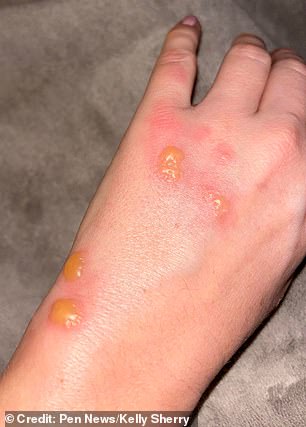

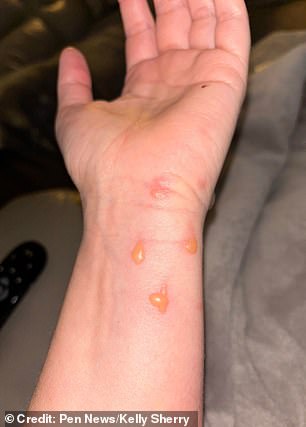

Callum Sinclair, project manager for the Scottish Invasive Species Initiative, confirmed that giant hogweed was the most likely culprit behind Kelly’s injuries.
“It’s my own business, so I’m losing income because I need to use my hands to perform treatments and I’ve had to cancel appointments until I recover.”
He now urges others to keep an eye out for the plant and to act quickly if they touch it.
She said: ‘Make sure you change your clothes and wash not only your hands but also your arm and wrist area as soon as possible.
‘Be alert and educate anyone if you see it, also informing children of the dangers.
“I’m glad it didn’t come into contact with my eyes, as this can make you blind.”
Giant hogweed is native to the Caucasus, but was introduced to Britain as an ornamental plant in 1817 and its spread has now gotten out of control.
Mike Duddy, of the Mersey Basin Rivers Trust, said in 2015 that giant hogweed was “without a doubt the most dangerous plant in Britain”.
